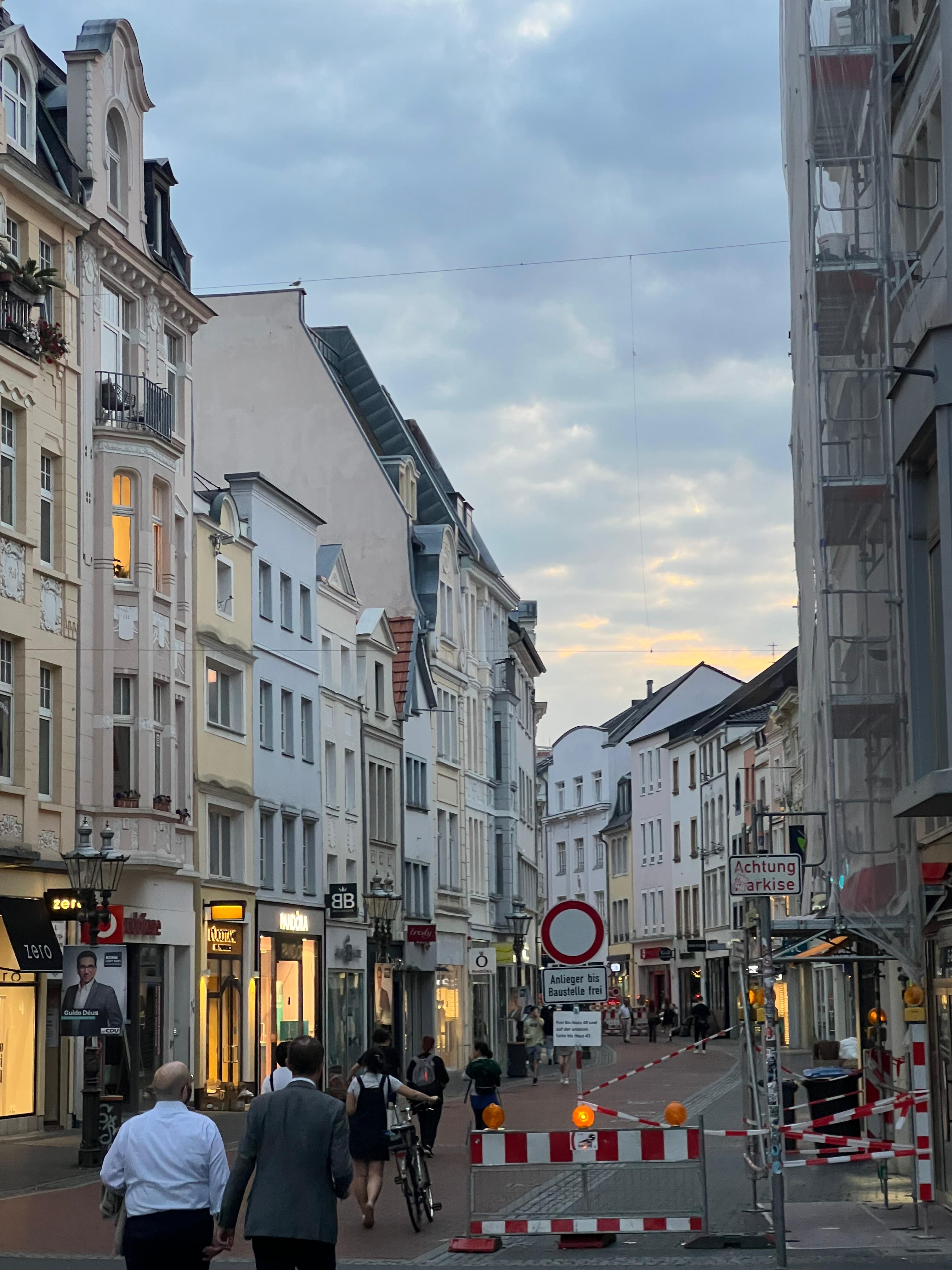When you observe negotiations, as a researcher, the observations don’t start and stop on entering and leaving the venue. Since leaving Bonn, I have been left trying to make sense of what I experienced as I made my way from the venue to the airport through the city of Bonn. The memories that have imprinted remind me of the deep intersection between racism and misogyny. An intersection that is walked over daily unseen, but in reality, is in plain view.
I was passing through the city to buy sweets from the Haribo shop, and was walking back towards the bus station. There is always a lot to see of a place and its people at and around the bus and train station. I walked down a side street where new pipe work was being laid. There was a black woman slumped in the doorway. Her breasts looked full and her sleep looked restless. I looked for the baby. Crammed in the doorway was a pushchair, a car seat and plastic bags of things. I couldn’t see a baby. I froze inside. I kept walking.
This image built on a week of moments where I felt those around me were treated differently to how I was treated. Was it foreigness? I wondered. But we were all foreign. It couldn’t have been language; we were all speaking English. Was it colour?
At the airport, I waited in the check in queue. A Black woman was at the desk. She had a large double buggy with her toddler in the front and her youngest on her back. I watched the mum follow the directions of the airline assistant. She handed over the passports and then tried to remove the bags from beneath the buggy – the bags that accompany two kids under three. She struggled with a plastic bag, it was stuck. I began to feel my chest restrict. She tugged at it and the pushchair moved with the force. A flimsy plastic bag, packed full. The handles!
I recalled standing in a similar line travelling alone with my youngest. I felt so strong then. Emotion welled up. As the three airline assistants looked on, I wondered at this woman’s strength and composure. The bag released. Then the toddler had to be lifted out, and the crying started. He tried to cling to his mum as she attempted to fold the pushchair circling around her. I couldn’t stand it. I moved forward to hold the buggy still, and as I stood within a stride, it gave in and folded in two. I stepped back into line. The Black girl behind acknowledged me with a nod. I could have folded there too.
These stories are moments in the social world that we are living right now. The world within the negotiations does not operate quite as the world it is situated within, except when it does. Race within the meeting rooms and corridors do not order as I saw on the streets and at the airport. It does not visibly intersect with gender in the culture of negotiations, except when it does. And when it does, it may be seen and heard in tense words or reprimands as someone is put in her place in plain view. And behind closed doors…through a glance, shared opinion and analysis…well then, the intersection can rise to the surface and be spoken in plain sight, albeit named as something else.
I can’t dislodge what I saw. Moments like these replay and sense doesn’t come easily. The onlooker is marked by this harm too.
Bibliography
I have learned to see experiences of race with those that I travel with and to make sense of this with Toni Morisson, especially Beloved, Maya Angelou’s Still I Rise, and more recently, the songs of Frank Yamma, especially Black Man and She Cried.
